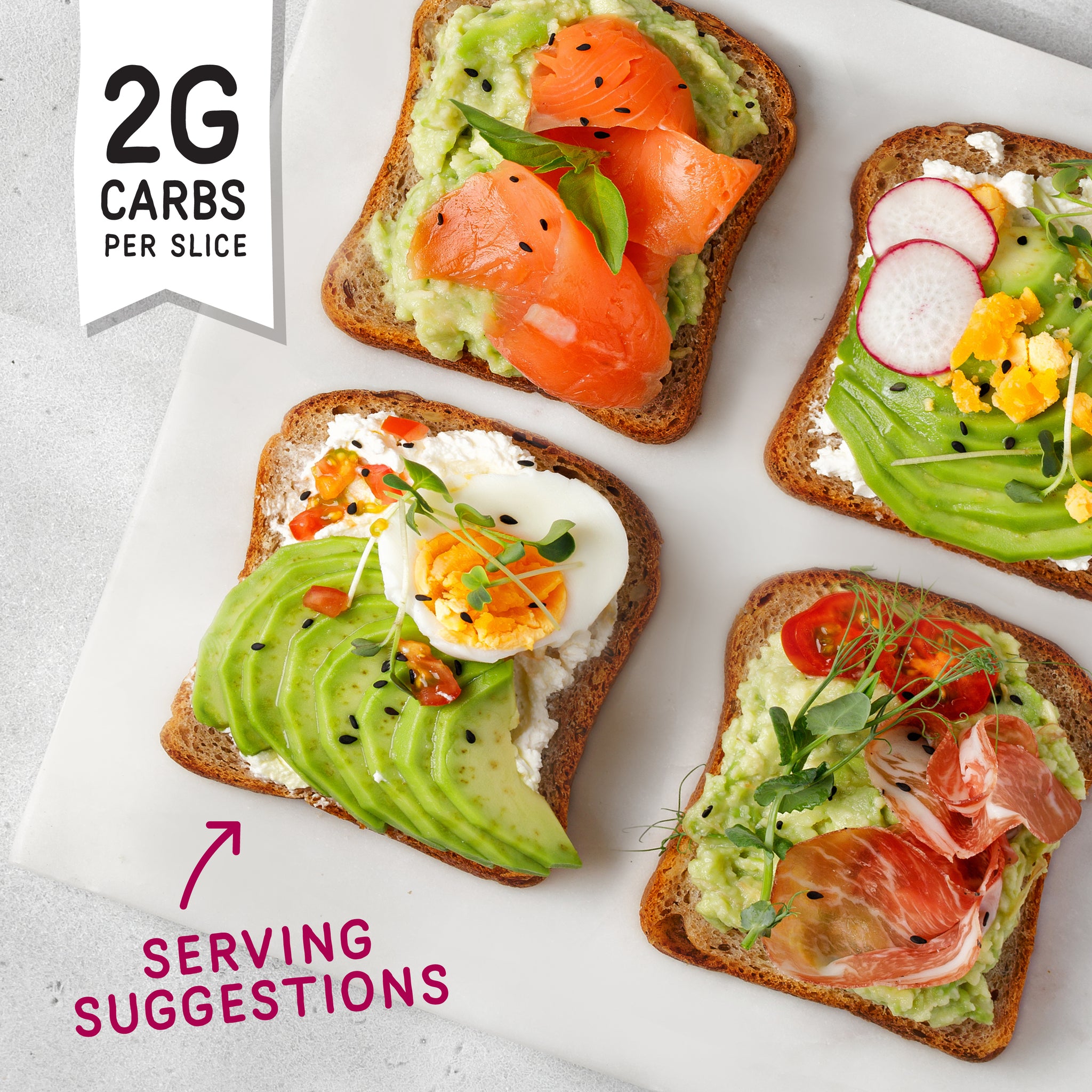The keto diet and bread have for a long time been thought to be incompatible. The traditional bread is made from refined wheat, which is loaded with carbohydrates. If you want to stay in ketosis for long, a slice of regular wheat bread will sabotage your advancement. It increases blood sugar levels which forces your body to use fat instead of glucose. Because of this, it was the reason that many keto-followers avoided bread, and often missed the convenience it provides for daily meals. However, today, innovations in baking have changed the past of baking.

Image credit: fitbakes.co.uk
What Is Ketogenic Diet Bread Exactly?
Ketogenic diet bread doesn’t just happen to be low carb, it’s been designed strategically. To make a loaf of bread that is rich in nutrients but practically carb-free, bakers mix carbohydrates-rich grains by using flaxseed or almond meal. They blend these with eggs, or other plant-based proteins. The high amount of protein in it is among its main advantages. Seven grams of protein per slice means it’s not only keto-friendly but also assists with muscle repair and appetite management.
The seeds content is crucial. It can contain up to 17% of flax, sunflower, or chia keto bread provides an abundance of omega-3 fat acids as well as fiber. These nutrients help improve cardiovascular health, digestion and satiety. This helps those who consume keto food to remain fuller without cravings. Keto bread can be a healthier option for conventional products with low calories that sacrifice taste.
The Role of the Lowest Carb Bread in Blood Sugar Management
The lowest carb bread is more than a diet-friendly option it’s a powerful tool for metabolic health. With just 2 grams of net carbs per slice, it can help stabilize blood sugar, reducing crash and spikes that contribute to fatigue, hunger and the long-term issue of insulin resistance. For people who are diabetic, this bread isn’t just convenient; it’s transformative. It will give you the comfort of bread, while maintaining safe glucose levels.
Low-carb bread is also perfect for diets that are low on calories. It’s an excellent opportunity to enjoy a filling sandwich or breakfast toast. For those who are concerned about weight loss, it is possible to use it to satisfy hunger while keeping their carbs and calories in check.
Keto Bread: A Practical Everyday Solution
Keto-style bread is no longer a sign of compromise. Instead, it emphasizes opportunity. Breakfasts could include avocado toast with seeds on keto bread, offering healthful fats, fiber as well as protein, all in one balanced meal. Lunches at the office can include cheese and turkey sandwiches, with no excess carbs. Even comfort food items like garlic bread with a low carb content are great for dinner.
One of the most significant benefits of ketogenic breads is their versatility. It’s not just a treat, but a staple for a keto lifestyle that’s sustainable. It can be integrated into every meal and eliminates the sense of restriction which causes people to give up on diets.
What is the reason? Keto Bread Is the Future of a Healthy Diet
These breads will define the future of healthful diets for everyone, not only those on keto. Proteins from plants, high-fiber and omega-rich seeds are beneficial for everyone and not just those who need to reduce carbs. Keto bread is popular with people with diabetes, athletes, weight-conscious people as well as those simply looking for a healthier alternative than white bread.
As opposed to diet fads that appear temporary, keto bread represents the most recent development in baking. It provides long-term health benefits as well as solving the problem of how to enjoy a loaf without carbohydrates.
Conclusion
The keto diet does not have to be one of the wars. With the advancement of technology, ketogenic bread allows users to enjoy a slice of cake without affecting your ketosis. You can now enjoy your bread, toast and snacks by eating the tiniest carbohydrate bread available. Bread made on keto is more than just an option. It’s become the cornerstone of modern nutrition, bridging traditional food choices and healthy lifestyles.